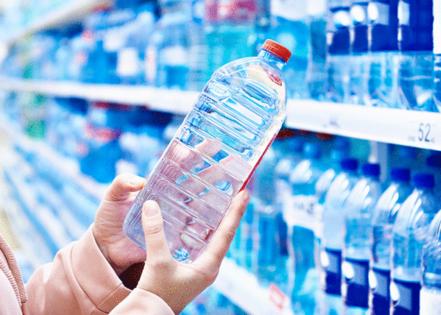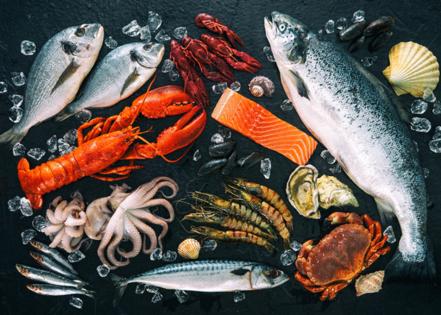7 chemicals found in everyday products that might be harming your health
Published in Slideshow World
Subscribe
7 chemicals found in everyday products that might be harming your health
Microplastics in single-use water bottles, phthalates in nail polish, and BPA in canned food containers—it's hard to avoid questionable chemicals in today's world.
With so many potential dangers in everyday objects, consumers may feel rightfully overwhelmed. And it certainly doesn't help that some companies have chosen to tout their supposedly environmentally safe products and processes, even as other parts of their business harm the environment—a practice called "greenwashing." It takes a careful and detailed consumer to avoid the worst offenders, but the price is worth paying given the potential risks to one's health.
Chemical exposure through food, consumer products, and the environment affects people at every life stage. Babies and toddlers are vulnerable to the effects of heavy metals, such as mercury and lead, as the U.S. House Committee on Oversight and Reform noted in 2021. The committee found that well-known companies such as Gerber and Nurture, used ingredients with significant amounts of lead while in production. Per- and polyfluoroalkyl substances, known as PFAS, can affect fertility and increase cancer risk. Microplastics can accelerate aging. A study from the University of California, Berkeley found that exposure to benzene and trichloroethylene, two common environmental toxins, can accelerate the biological aging process.
Fortunately, it's not just consumers taking individual action to curb these chemicals. Federal agencies are also taking action. The Environmental Protection Agency, for example, set limits for the first time in April 2024 on the amount of PFAS considered safe in drinking water. These forever chemicals never break down and stay in the environment and body forever. The agency believes these rules will reduce PFAS exposure for 100 million people, prevent thousands of deaths in the coming years, and reduce the incidence of serious illness.
QMedic compiled a list of chemicals in food, water, and consumer goods, their health risks, and how to avoid them, using data from the Centers for Disease Control and Prevention and studies from journals like Nature.
Visit thestacker.com for similar lists and stories.
Microplastics
Microplastics are small plastic particles—100 nanometers to 5 mm in length—that leach out from plastic materials such as bottles and food packaging. Chemicals in these particles are sometimes called endocrine-disrupting chemicals because they interfere with the endocrine system, which manages the hormones that control critical bodily functions. This interference may result in a higher risk of developing conditions such as cancer, diabetes, and infertility.
The best ways to reduce exposure to microplastics are to eat less red meat (because microplastics tend to build up in animals we eat); substitute plastic water bottles and utensils for those made of glass, metal, or bamboo; and microwave food in glass or ceramic containers, because heat makes plastic containers release harmful chemicals.
BPA
Bisphenol A, or BPA, can typically be found in plastics and is used to produce shatterproof windows, water bottles, and even water supply pipes. Its ubiquity is why BPAs are so worrisome.
A study conducted by the CDC found that BPA can be found in 93% of more than 2,000 urine samples of those 6 years and older. These chemicals could act like hormones and thus disrupt puberty and ovulation, leading to infertility. Some evidence suggests that it can also contribute to Type 2 diabetes by affecting insulin resistance. Exposure to the chemical before or after birth may also lead to an increased incidence of asthma.
The ways to avoid BPA are very similar to those to avoid microplastics: Opt for less plastic use in the kitchen, use more glass or ceramic products—especially when heating up foods and liquids—and use BPA-free products.
Flame retardants
Flame retardants coat everyday items, such as furniture, carpets, electronics, and baby products. These chemicals fall into one of two classes: organophosphates or polybrominated diphenyl ethers, or PBDEs. Researchers from Case Western Reserve University found that exposure to organophosphates has been found to negatively affect the development of the nervous system.
Some research, including a study from the University of California, Riverside, suggests a possible association between PBDE exposure and autism risk, though further studies are needed to confirm this link. Avoiding exposure to these chemicals is difficult, but buying flame-retardant-free furniture and vacuuming and mopping frequently to remove dust containing flame retardants can help.
PFAS
PFAS never break down. More than 9,000 PFAS can be found in products from cosmetics to dental floss to nonstick cookware. PFAS are endocrine-disrupting chemicals that have been linked to lower sperm count and an increased risk of cancer. To avoid these forever chemicals as much as possible, replace nonstick cookware with ceramic or cast iron pots and pans; use a water filter; and avoid textiles labeled "waterproof" or "stainproof"—including carpeting and furniture—that don't also claim to be PFAS-free.
Phthalates
Phthalates are chemicals used to make plastics more flexible. They are added to various products from nail polish to fast-food wrappers to commercial piping and tubing. Phthalates are endocrine-disrupting chemicals that have been linked to an increased risk of fibroids, usually benign tumors composed of smooth muscle cells and fibrous connective tissue in the uterus.
A study published in 2022 from Northwestern University found that women exposed to PFAS had an increased risk of developing fibroids, which represent the most common tumor in reproductive-age women. Another study conducted by researchers from New York University and the University of Iowa found that phthalate exposure increased the risk of death from cardiovascular disease and all causes.
Mercury
Heavy metals such as mercury are found in Earth's crust, but they become problematic when they enter the environment—such as in marine animals—through agricultural, industrial, and noncommercial processes. Mercury is a neurotoxin, and its effects on humans can be subtle or severe, depending on a person's age and how long exposure lasts. While no data ties mercury to cancer, information is limited, and high doses have been found to increase several types of tumors in rodents.
Mercury's effects are most salient in children. Unborn children could be exposed to mercury when their mother consumes fish or shellfish during pregnancy. Exposure to mercury in utero can affect young children's thinking skills, memory, attention, and language development. The EPA is trying to limit mercury exposure through many avenues. It has established a limit of two parts per billion mercury in drinking water, implemented standards to reduce toxic emissions, and banned mercury from use in paint, among other measures.
Lead
Lead is a heavy metal found in faucets and pipes (which can in turn cause water contamination), paint, jewelry, and toys. It is particularly dangerous to babies and young children because of their small size and developing brains, as lead exposure negatively affects cognitive development.
Exposure has been linked to lower IQ, learning disabilities, and behavioral problems. It has also been associated with attention deficit hyperactivity disorder. This issue is playing out in real time: In 2016, parents in Flint, Michigan, filed a class-action lawsuit against the state's Department of Education, alleging that nearly 30,000 children have been exposed to this toxin, which has adversely affected their academic, social, and behavioral success.
According to the CDC, the best ways to protect children from lead exposure include having a licensed lead inspector examine your home, particularly before renovations; cleaning up dust from peeling paint, which may contain lead; and feeding children a healthy diet high in calcium, vitamin C, and iron.
Additional research by Emma Rubin. Story editing by Carren Jao. Additional editing by Elisa Huang. Copy editing by Paris Close.
This story originally appeared on QMedic and was produced and distributed in partnership with Stacker Studio.














Comments